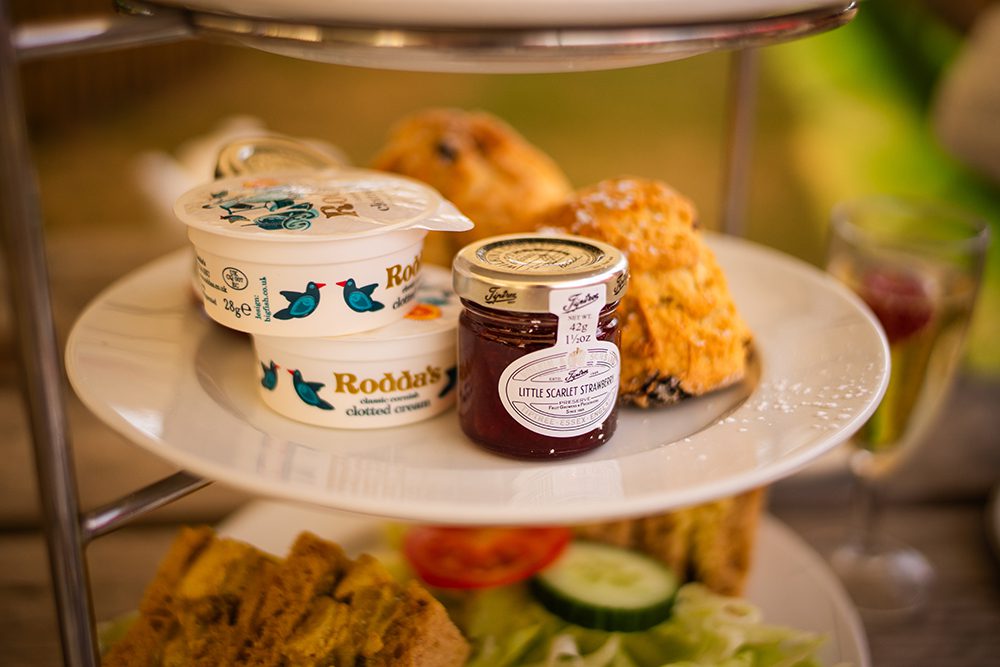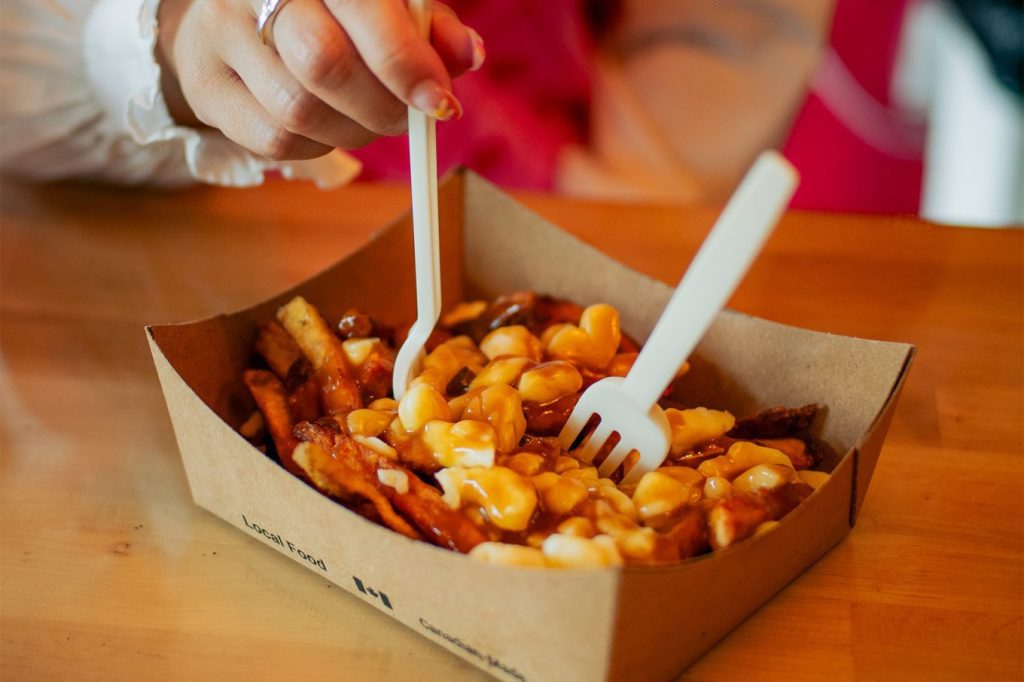Whether you’re moving abroad or within your own country, these 10 sustainable packing tips for a low-waste move abroad will help you move more efficiently, saving you money and the planet from extra waste. More specifically, this blog post will help you make a low-waste move overseas. This blog post also serves as a checklist for anyone who is overwhelmed about how to pack to move overseas.
This is the first in my new expat series of blog posts for people who want to move abroad or overseas. Within my expat-life-focused blog posts I will be sharing tips for moving overseas that you can apply no matter where you’re moving from or to. Whether you’re a 21 year old leaving home for the first time to move from England to Paris on the Eurostar, with only two suitcases full of essentials or packing up your entire life and business to fly 10 hours to another continent with your worldly possessions in the hands of a moving company you’ve never used before – I’ve got your back. Lucky for you I’ve done both (and another 7 times in between) so I know a thing or two about moving homes.
In time I’ll also be sharing more specific information on expat life in Canada (where I moved to in 2021) including working-holiday visa applications, the process of moving and entering into Canada and how to find somewhere to live. I’ll also be covering everything from the exciting tasks like furnishing your new home and stocking those empty shelves, to the more mundane tasks such as getting a Canadian phone plan (mobile network contract), setting up a bank account and navigating medical/health insurance.
Whichever country you’re moving to you can expect that as I share more tips on moving abroad or living overseas, I will always be giving you advice on how to do it more mindfully. My goal here is to help relieve the burden of making such a big life change so that you can enjoy the experience more whilst taking actions to make more environmentally conscious decisions because not only will these simple acts help to save the planet they can also save you money.
To find more expat content for moving abroad, hit up Travel on my main menu where you’ll find everything you need under Expat.
Okay lets get into my 10 sustainable packing tips for a low-waste move abroad:
1. Reuse packing boxes
The most important thing that you need for moving anywhere is boxes. The most helpful moving gift we were given in preparation for our low-waste move to Canada was my Aunt’s moving boxes. My aunt had not long moved into her new home when we started packing for our original moving date (April 2020) and kept the boxes flattened in her garage for us.
Not only did using her boxes reduce the need for production of brand new cardboard boxes but it also saved us a significant amount of money for packing materials from the original quote from our movers. The cost of packing boxes won’t break the bank but they do add up! What was even better about our second hand boxes was that my Aunt didn’t get them new either. Her movers had used them for a previous client’s move too – hence the notes in red pen on some of our boxes, we didn’t change our names to David and Alex nor did we pack any Blue Ray DVDs. It was such a great first step towards a low-waste move abroad!
I get that not everyone conveniently has an Auntie moving in whilst they’re moving out though so here are some other ways to get boxes for moving home:
- Ask local shop owners if they can start saving boxes from deliveries for you
- Go to a real estate agency and ask if they could put word out that you’re in need of second hand moving boxes
- Go to a supermarket/grocery store and ask for empty delivery boxes
- If you live in an apartment you can ask permission to put up a notice that asks anyone moving in if you can have their unwanted empty boxes.
If you’re moving overseas just double check if you need to meet any specific size requirements before choosing your boxes.
If you do need to purchase cardboard boxes for your move abroad then consider purchasing boxes made from recycled paper to make them low-waste.
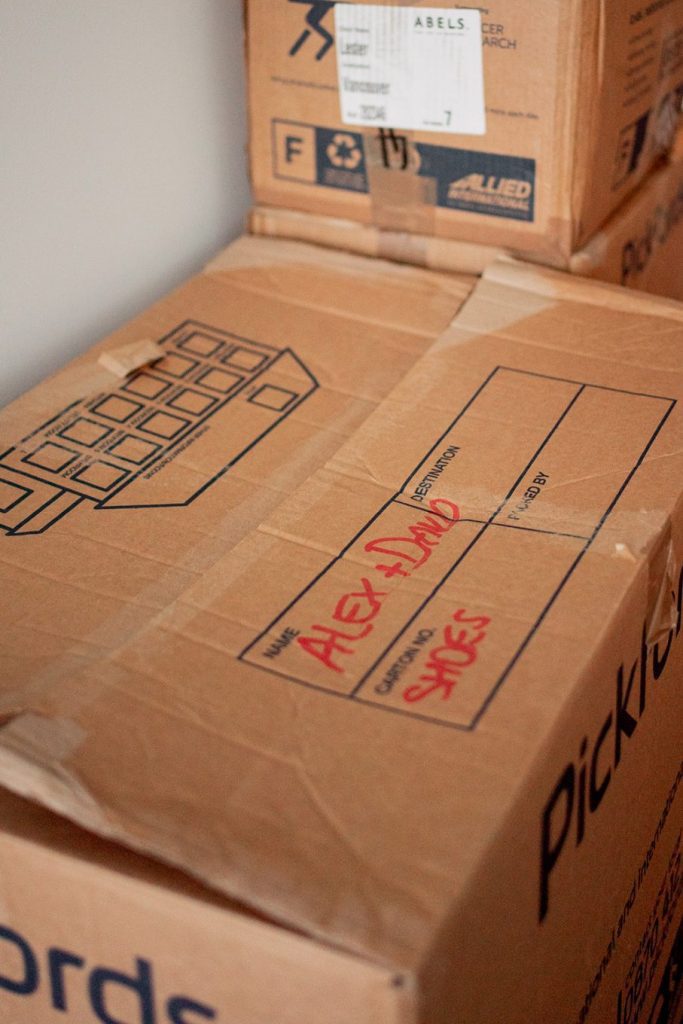
2. Use what you have
The most sustainable thing you can do is use what you already have before buying something else and wasting what you’ve got.
Before buying packing materials start by looking at home for anything you can use. Old newspapers, magazines, jiffy bags, tissue paper and wrapping paper.
It’s also wise to start saving packaging materials from any packages you or your neighbours/friends/family get from online orders.
When we were moving out of London I started to collect discarded copies of the daily newspapers strewn across the seats of the tube on quiet evenings after rush hour.
If you already have plastic packing tape then use that up before buying more, it goes a really long way. Then when you buy more tape consider purchasing a paper tape that’s fully recyclable.
How to assemble and tape a strong packing box for moving
If you’re worried about the integrity of paper tape or a second hand box, here’s the best way to assemble a packing box to make it strong enough for your belongings:
- Don’t over lap the ends of your boxes as you fold them closed. The box will be stronger if you fold the shorter ends in first then the longer ends.
- Tape the longer ends flush together, a gap between the edges will weaken the integrity of the moving box. Keep the roll of tape close to the box as you unroll to prevent waste.
- When taping boxes start and end from a quarter of the length of the box away from the area you’re sealing, this way if it ever peels off a bit it won’t affect the area you’re sealing shut.
- To strengthen your box, particularly a second hand box, you can apply another two lines of tape: one to the right of the centre tape and the other to the left.
- If you’re packing particularly heavy items the best way to strengthen your box is to form an “H” seal with your tape. This involves taping the outer edges, usually the shorter ones, of your box. By doing this you’ll seal all access points to the box making it much harder for it to open. Top tip for this part, start your tape on a diagonal from the corner then pull it up and across – it will save you from having to fold over the edges of the tape where you start and end.
You also want to be mindful of not leaving empty space in your boxes as you’re packing. Loose items with room to move around can also weaken the integrity of your packing boxes.
3. Vacuum compression bags for packing
A good friend showed me a few years ago how she manages to pack into just cabin luggage for her trips, saving her money. Her trick is to pack clothing into vacuum compression bags to save space so she can fit more in.
This tip won’t help with regards to the weight of the boxes or suitcases you’re packing into but if weight isn’t an issue for you, it will most certainly help you with volume. When packing our linens, bulkier clothes and fabrics from my sewing kit we packed into vacuum compression bags so we could utilise the space in our boxes.
4. Sell items locally
A simple idea to consider for a low-waste move abroad is to keep the radius for any larger items you’re selling as local so they don’t have to travel so far, plus it makes it easier for you if the buyer is able to come and pick them up. This is what we did with the likes of our spin bike, washer-dryer and sewing machine. Local sales will reduce emissions.
Of course if there isn’t someone in the market for your old freezer 2 weeks before you move, expanding the sales radius is still giving that freezer a second life.
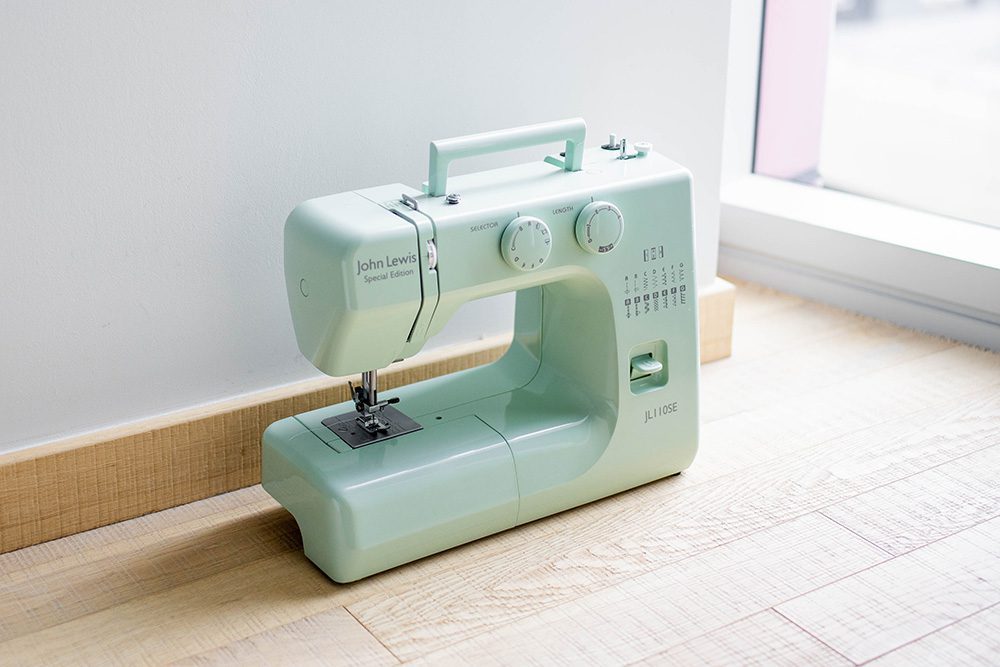
5. Revival of the hand-me-downs
Remember once upon a time when getting a sack of hand-me-downs from your favourite cousin was like the same high you get now finding the perfect jeans in a thrift store/charity shop for under $10/£5?
Take the opportunity of moving to gift some special people items that once brought you so much joy; it’s a great way to reduce the amount you need to pack/move with plus it gives those clothes a second life.
That’s what I did, I handed sacks of clothes off to my closest friends, younger cousins and Mum. Was it hard to part with it all? Heck yeah, I resent those b*tches daily. I’m kidding, it gives me the warm fuzzies when they send me photos of them or their friends wearing the dresses I’ve worn around the world on my travels.
6. Donate to someone in need
Just like in my last point about giving your items to someone close to you, you can also downsize and do something good for the planet by donating your unwanted belongings to a charity shop or thrift store.
If you run out of time to make a trip to your local charity shop then ask a friend if you can leave the bag of items with them to make the donation for you.
Just keep in mind that you only want to be donating clothes in good condition. Second-hand stores are handed copious amounts of donations which can often lead to overwhelm so call ahead to check which stores are accepting donations. You don’t want to make all these sustainable efforts for a low-waste move only to have your items for donation be rejected.
7. Recycle what you don’t reuse
Anything that you haven’t been able to sell, donate or keep to reuse should be recycled responsibly rather than thrown away to end up in a landfill. I know the stress of moving can leave you in a pretty vulnerable state of mind where you may want to just be rid of everything but please try to keep the future of the planet in mind as you do your final clear outs.
8. Offset yours and your belonging’s travel miles
If you are in a position where you are financially comfortable to do so, offsetting your travel is a great way to work on lowering the impact your move to a new home has on the planet. Whether it’s in the same country or to overseas, contributing to a good cause – if you can – will help make things better for future generations.
Check out my blog post How to carbon offset your flights where I share three companies to use to work towards a low-waste move (and more sustainable travels). You can also offset the carbon emissions from moving trucks.
We used Mossy Earth to offset our air travel to Canada when we moved.

9. Reuse your boxes and packaging when you arrive
Whether you were able to get your hands on secondhand boxes or not you will still have the opportunity to give your boxes and packing materials another chance to shine after you’ve moved in and unpacked.
I mentioned in my first point that you could put up a notice in an apartment block asking for boxes from people who have just moved in, well you could also put up a notice asking if anyone who’s moving out wants them.
Alternatively you can flatten them and keep them for another time or use if you have the storage space, which is what we did. When our boxes were delivered to our new home in Canada, after we unpacked we used some for storage, for things like shoe boxes, and flattened the others for future use.
Uses for your upcycled moving boxes are:
- A temporary table whilst you wait for your furniture to arrive.
- Protecting the floor or furniture as you decorate your new home.
- Protective surface for the floor when you build your furniture.
- Storage for seasonal items.
- Smaller ones can be used for shipping anything in the future.
- Arts and crafts projects.
- Building a fort – I don’t want to know the person who didn’t try to fit into their biggest moving box.

10. Take care of yourself
Sustainable means to uphold or maintain at a particular level. When it comes to sustainability in environmentalism it means to make better choices that meet our current needs so that we and future generations can benefit from them. For this final sustainable packing tip for a low-waste move abroad, the sustainability I’m referring to is for your mental and physical health. It’s important to take care of yourself throughout the packing process so that you in a good state of mind to approach the actual move and settling in.
I suffered some severe burnout from our move to Canada from not being appropriately prepared and I really dislike packing. I had some sleepless nights, a couple of panic attacks and I even got so run down that I was sick the week before and after arriving in Canada (before you speculate it wasn’t Covid, I tested, a lot). Of course it won’t be like this for everyone but moving is incredibly stressful, anyone who has ever done it knows this, especially if you’re uprooting and moving to another country.
Make your packing process sustainable for your physical and mental health with these tips I have put together in hindsight:
Make a packing schedule
Don’t try to pack in between other activities in the day.
On average it takes your brain 23 minutes to be able to focus on a task after a distraction, so if you’re packing, popping out to the shops, packing, having lunch, seeing family then packing again you’re going to waste a lot of energy and time trying to get back into it (this is exactly what I did for two weeks).
Instead, make a schedule that focuses on when you’re most productive and block off that time of day to dedicate to packing. You’ll find you achieve way more this way.
Avoid packing at night
Try to set a cut off time so you can wind down before bed to prevent your mind from racing with all the packing you still need to do. Before you go to sleep make time for a soothing activity such as reading a book or watch something familiar that triggers feelings of safety during these turbulent times.
Stay hydrated, eat well and move your body
Pinched from everyone’s New Year’s resolutions is the need to take care of your body. Make sure you’re eating balanced meals at regular times and keep a bottle of water close by whilst you’re packing so that a) you keep hydrated and b) you don’t have to leave what you’re doing too often and probably get distracted.
Bending down, lifting and carrying whilst packing can cause aches and pains so make sure you move your body adequately to give it release, however that looks for you. If you are lifting heavy items then please make sure you are lifting correctly and your body is sufficiently supported.
Practice packing
If you’re moving abroad and taking the last of your belongings (after packing into moving boxes) in your luggage with you then make sure you know it will all fit as many days before as you can. Trust me, you don’t want to waste your last moments before moving panicking because you can’t fit everything in.
Do things that bring you joy
Allow yourself breaks to avoid burnout whilst you’re packing to move. Make time to do the things that offer you a release from figuring out who you love enough to give your Fenty contour sticks to, how to pack hats and if you really need your prom shoes that you still think will come back into fashion (sadly they did but I had already given them away by then).
Maybe it’s a glass of wine with a face mask on the sofa, it could be taking yourself off to the cinema to distract yourself with someone’s fictional life or perhaps it’s finding a way to run down your rechargeable vibrator so you can pack it without the risk of it turning on in your suitcase. You do you boo.
If you find joy in packing then lucky you but still, take a break!
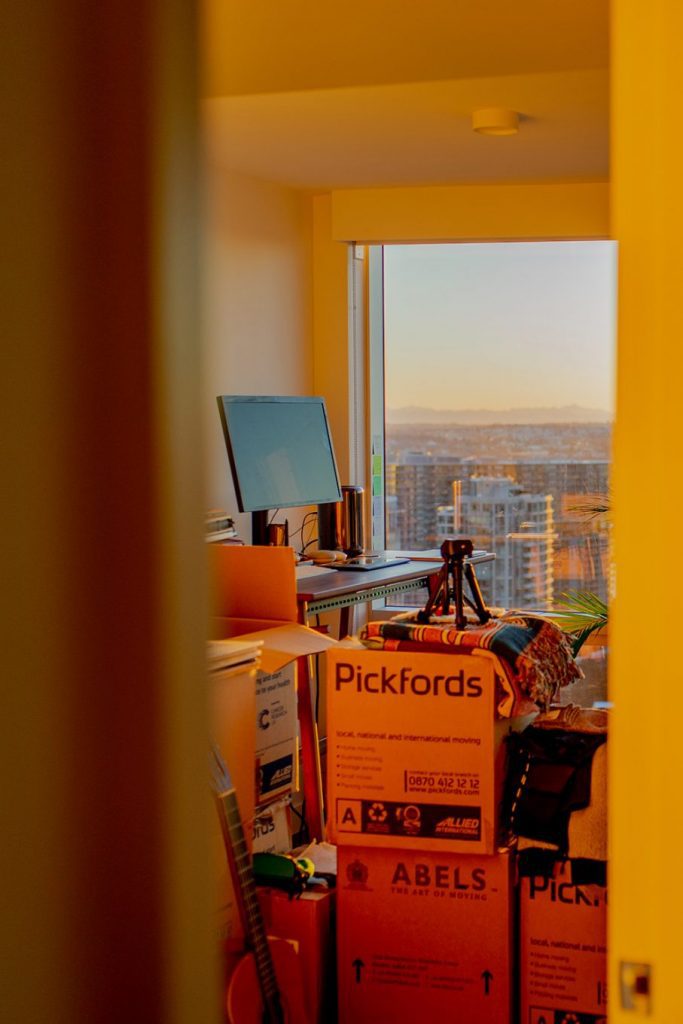
Good luck with your move!
If you have any more sustainable tips for a low-waste move abroad that will help others make better choices for the planet then please leave them in a comment below so we can learn from them!
Do more on & for the planet, Gabriella



